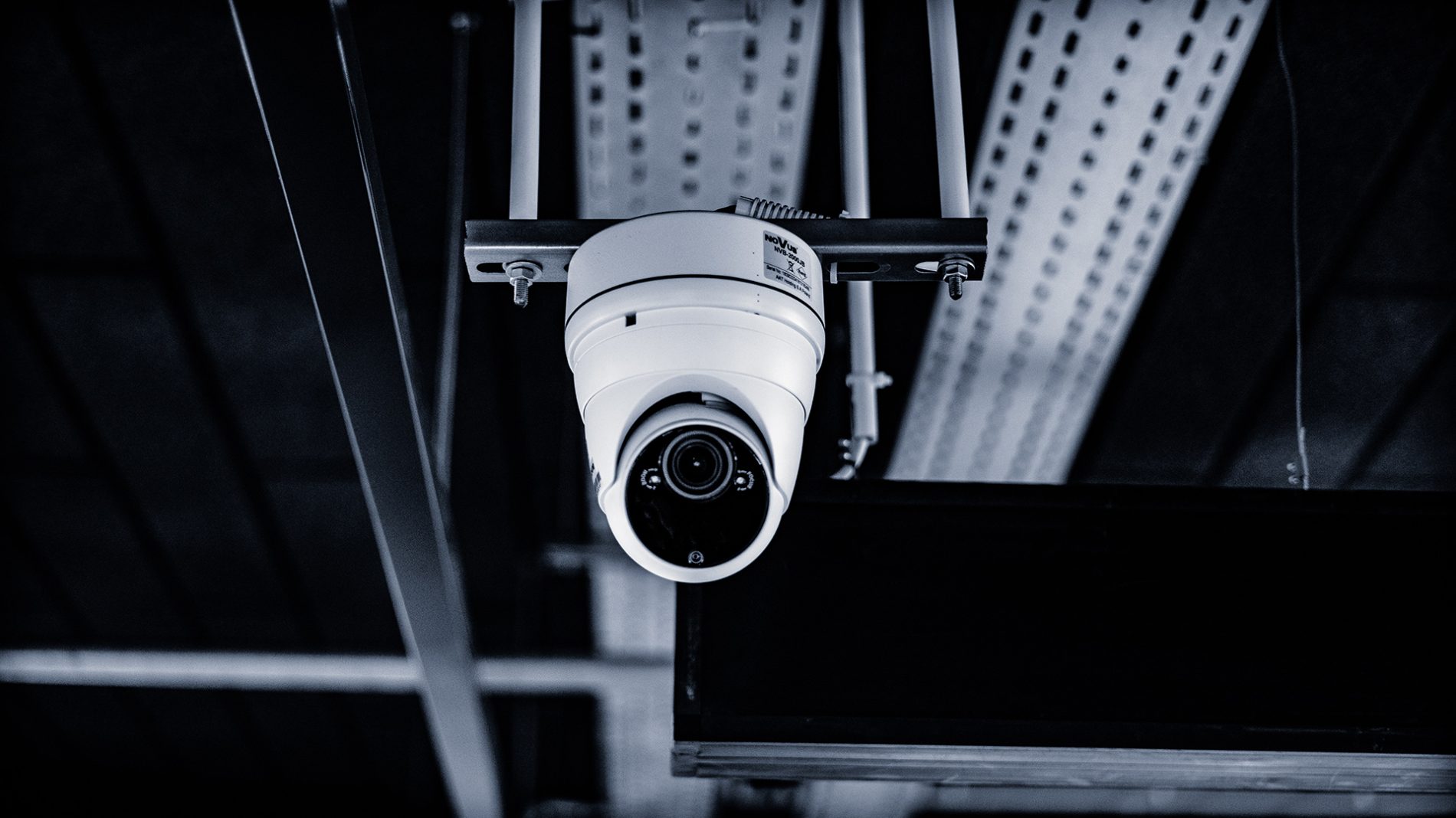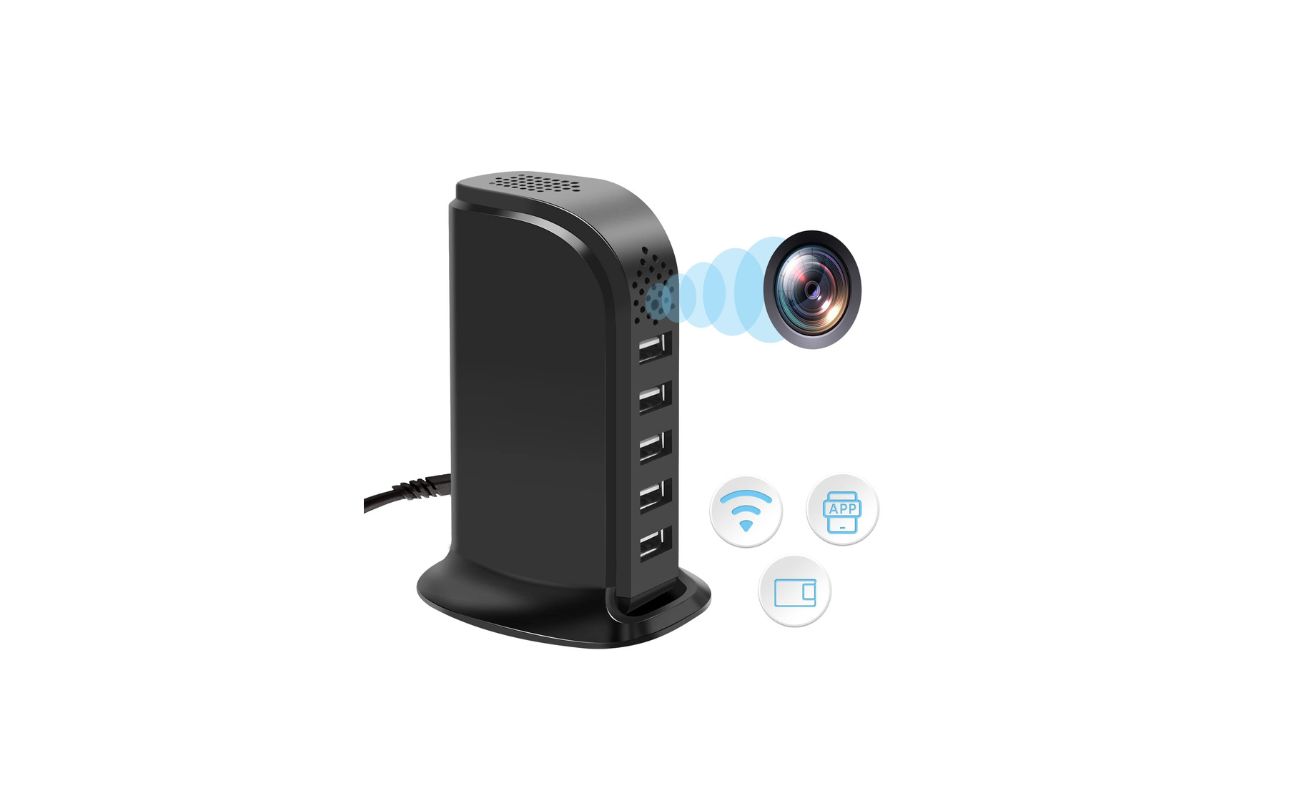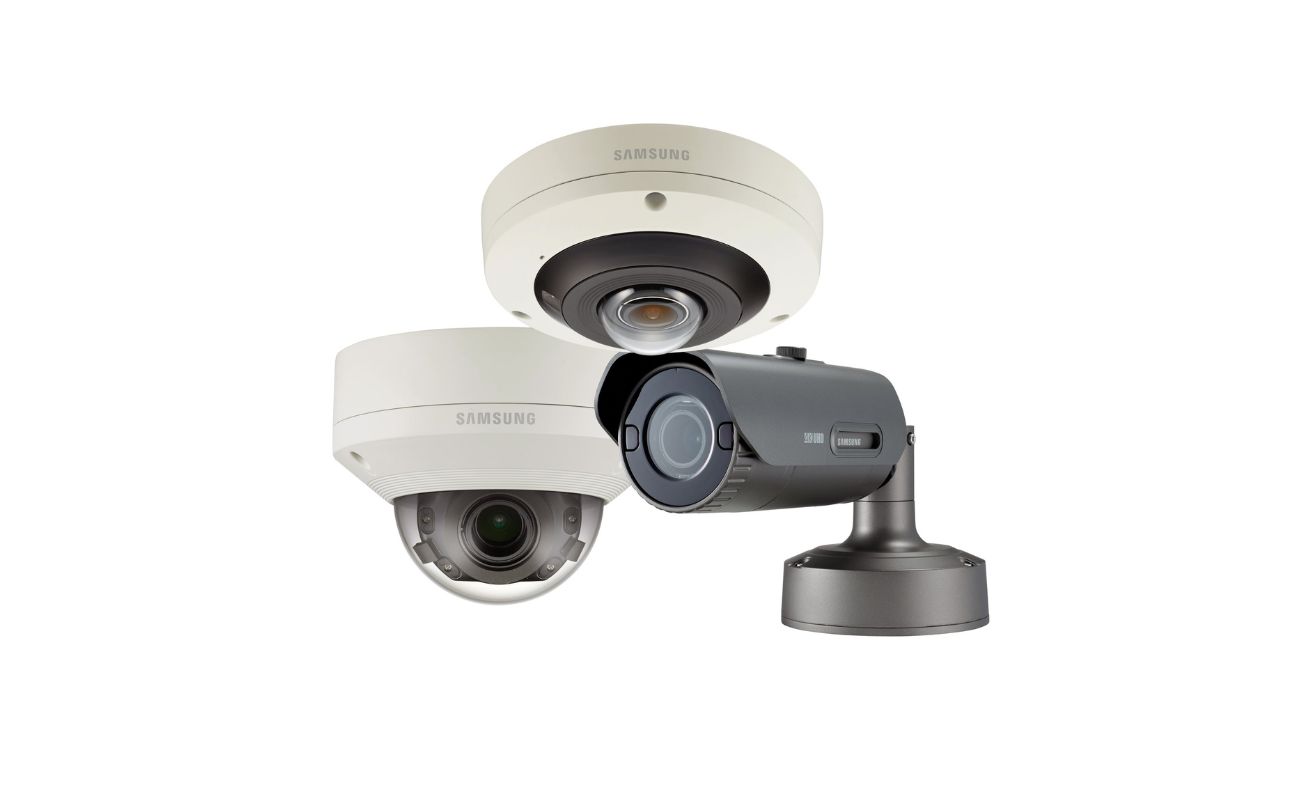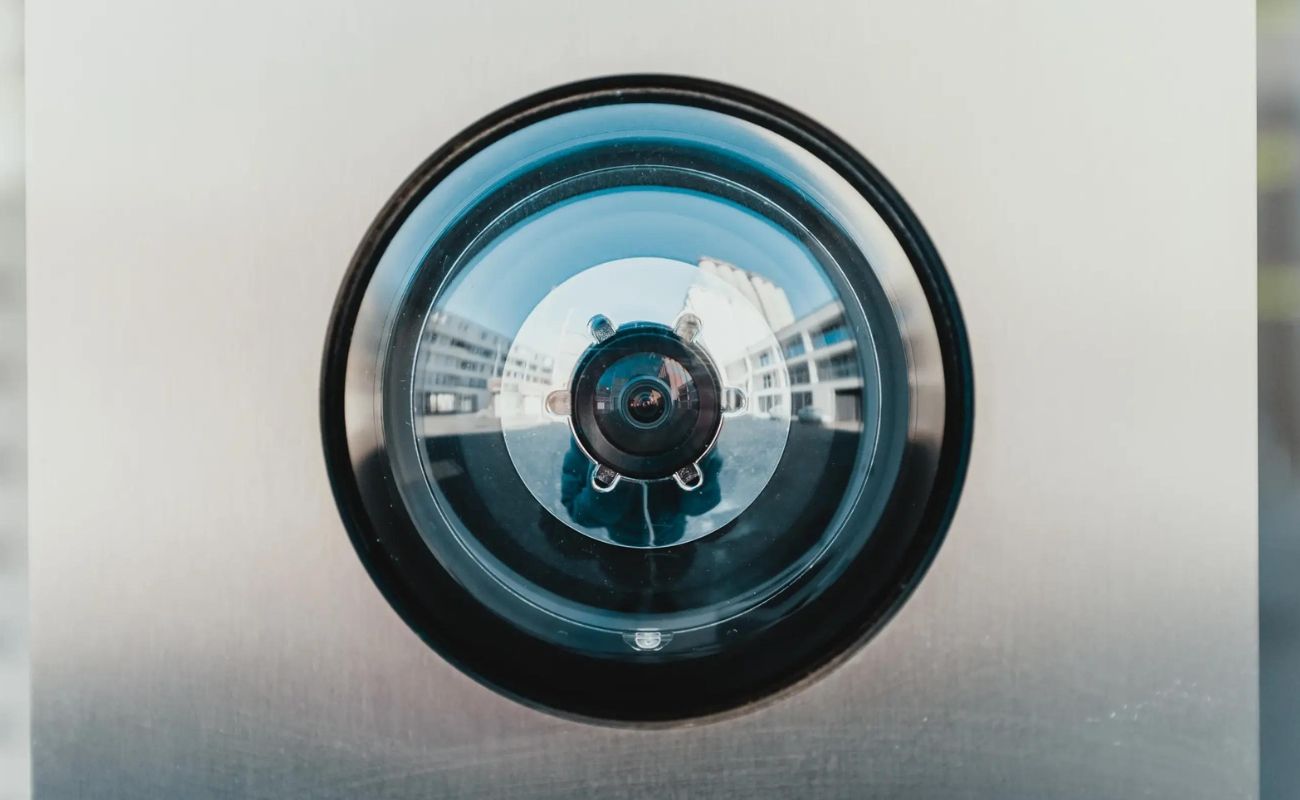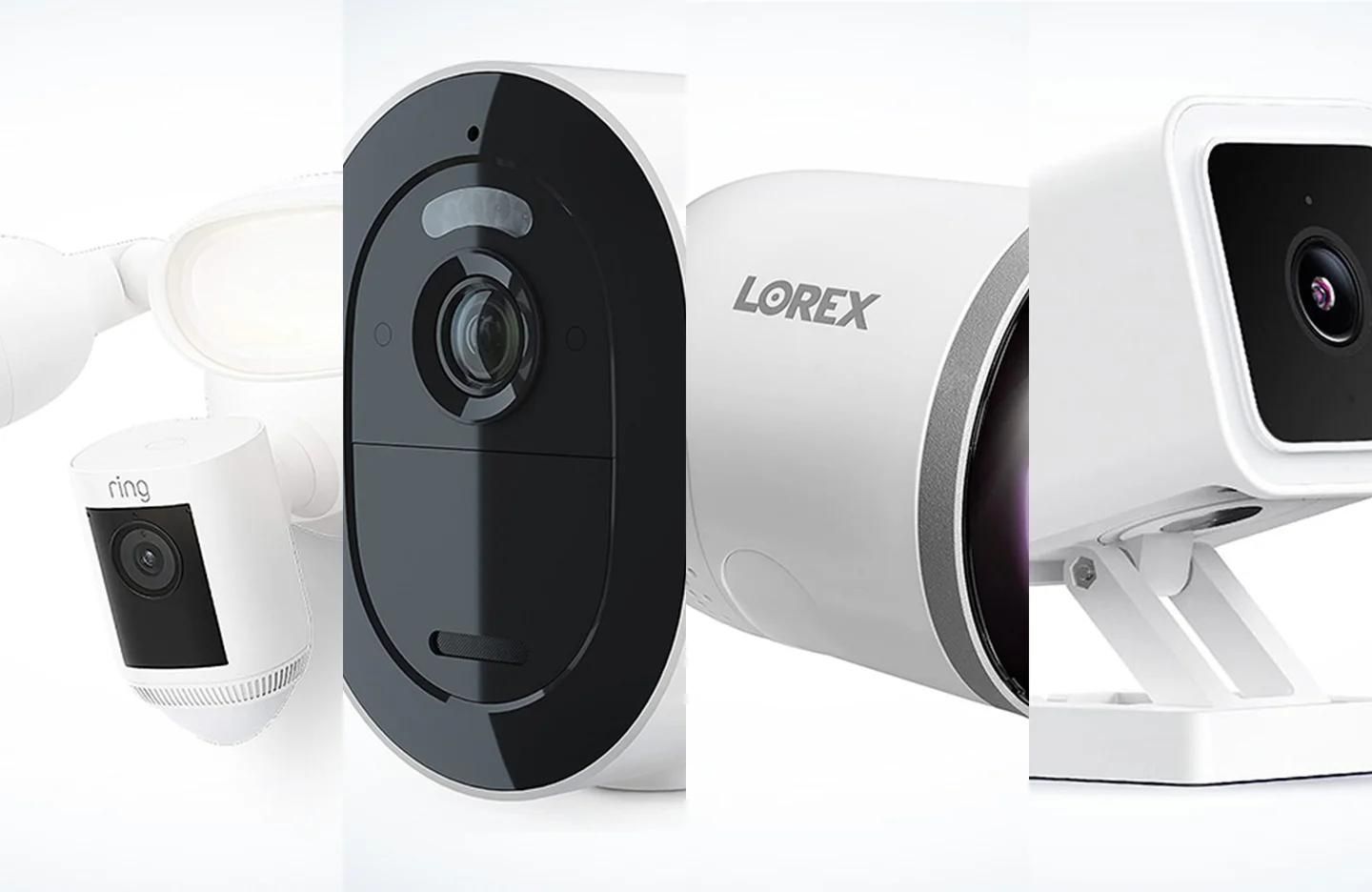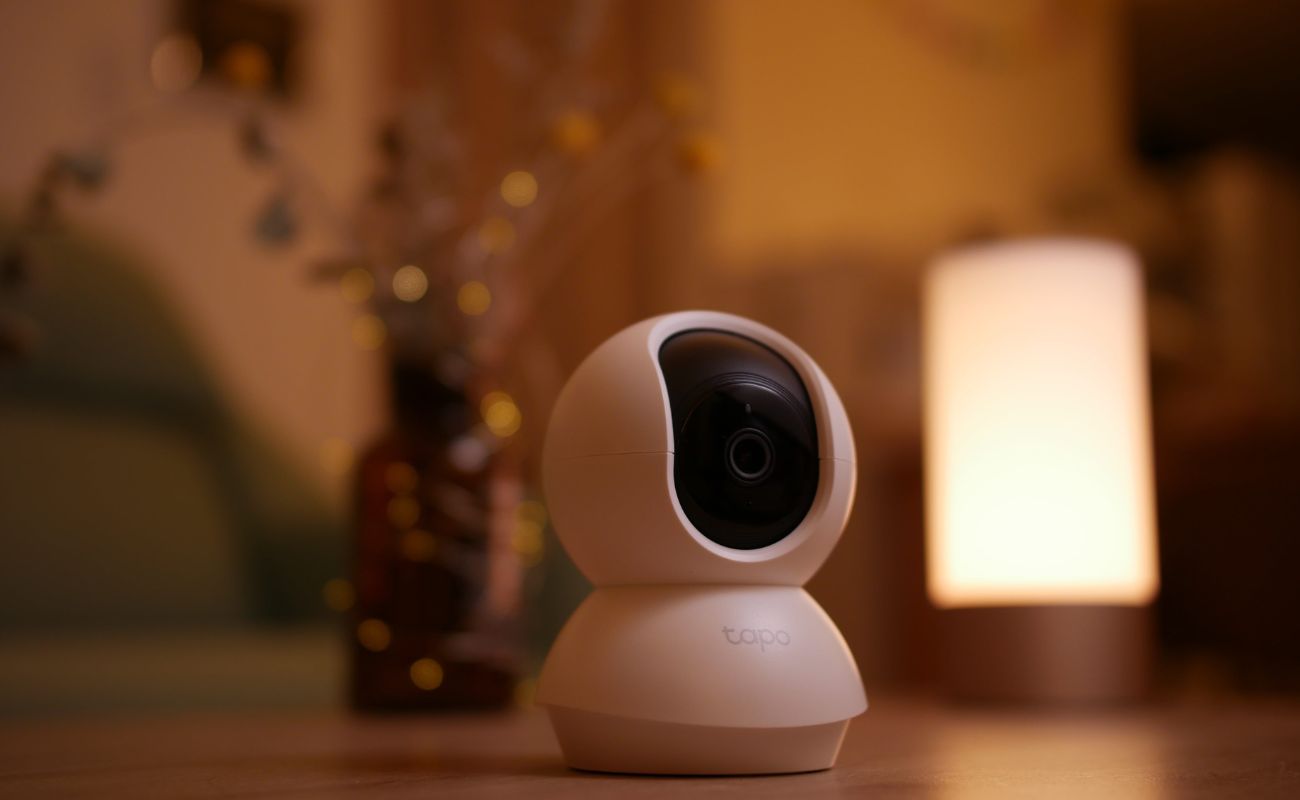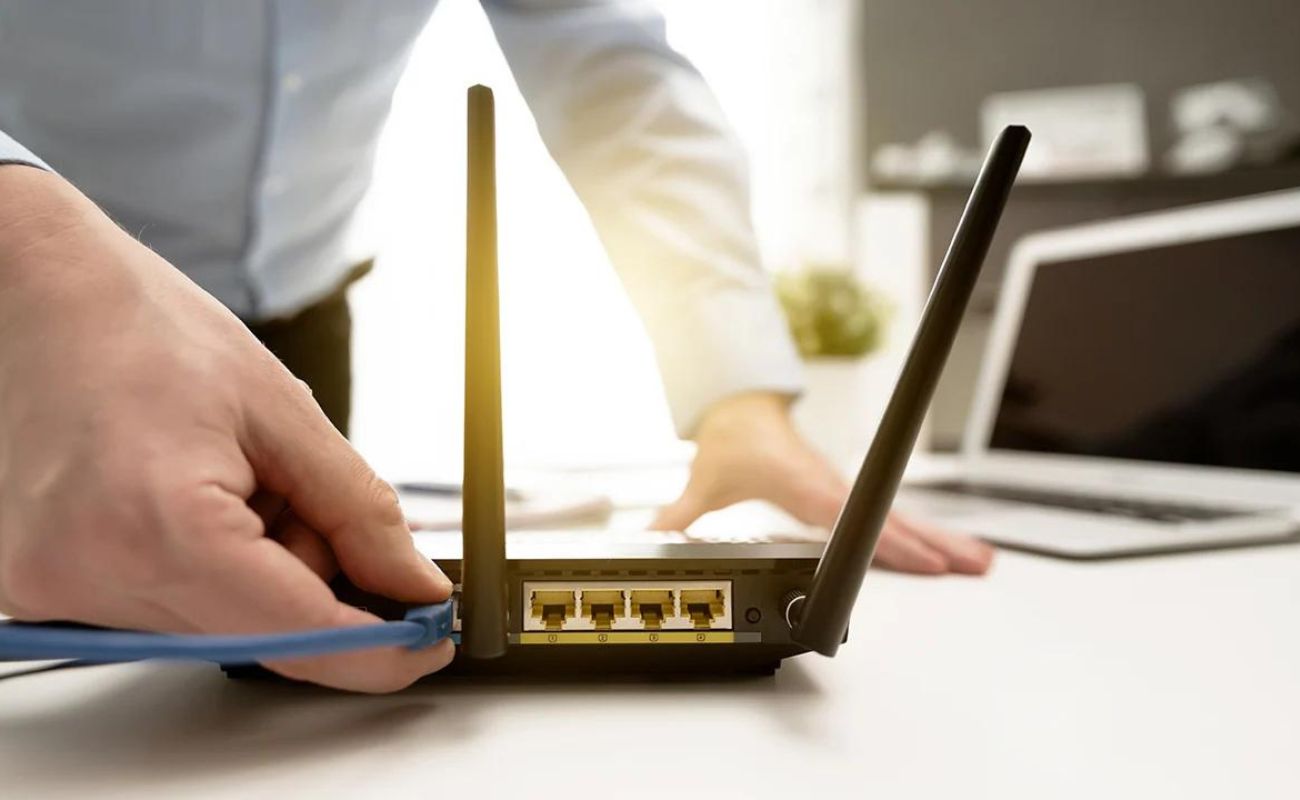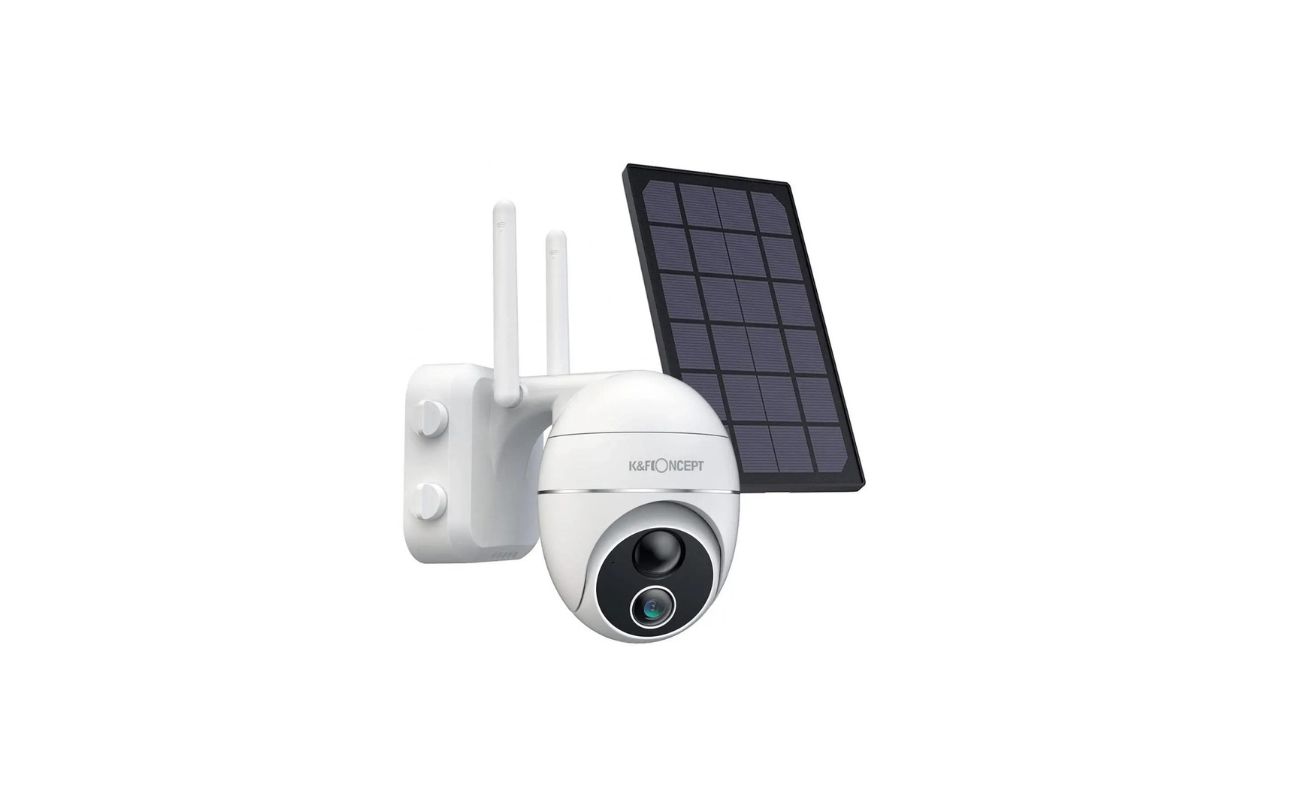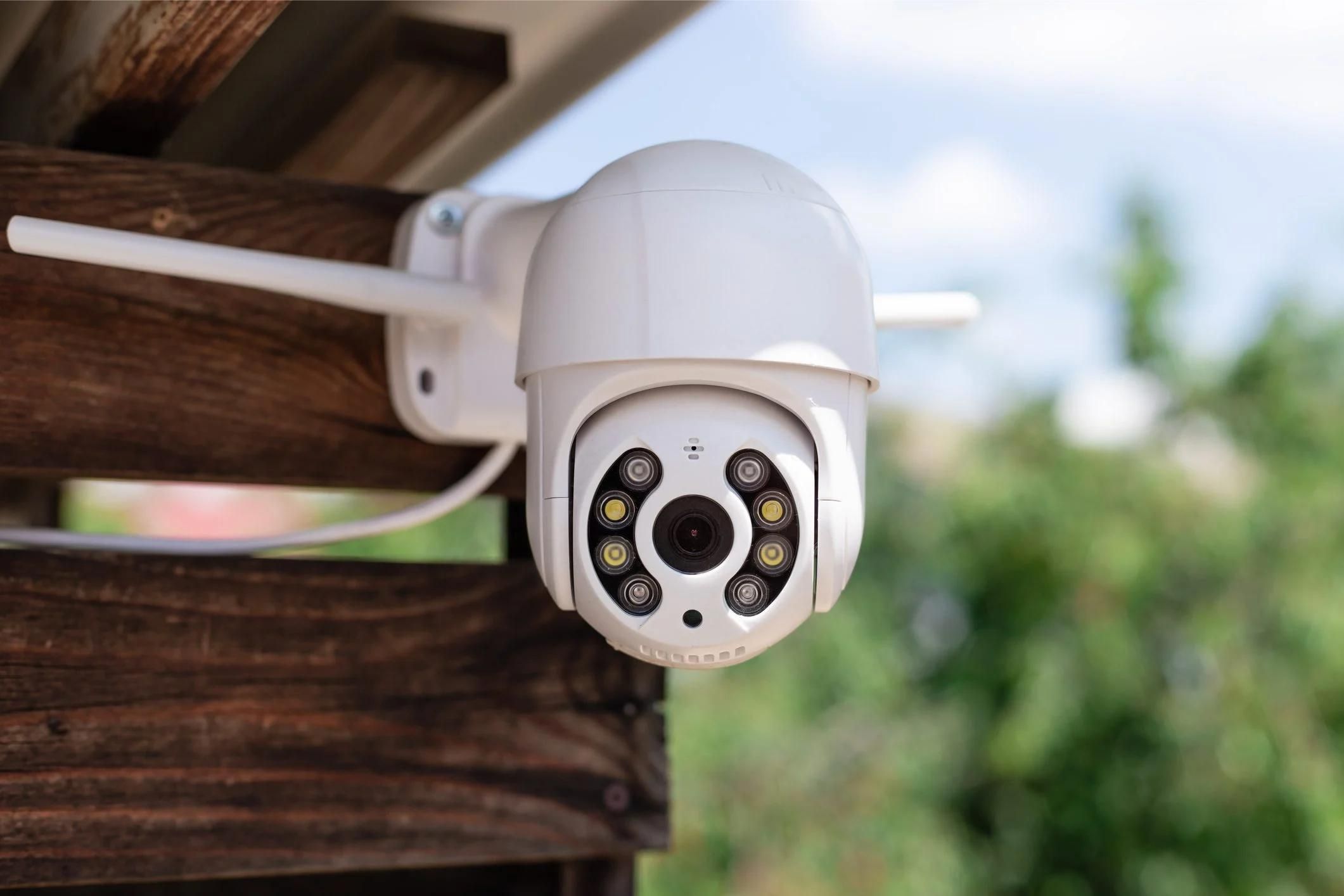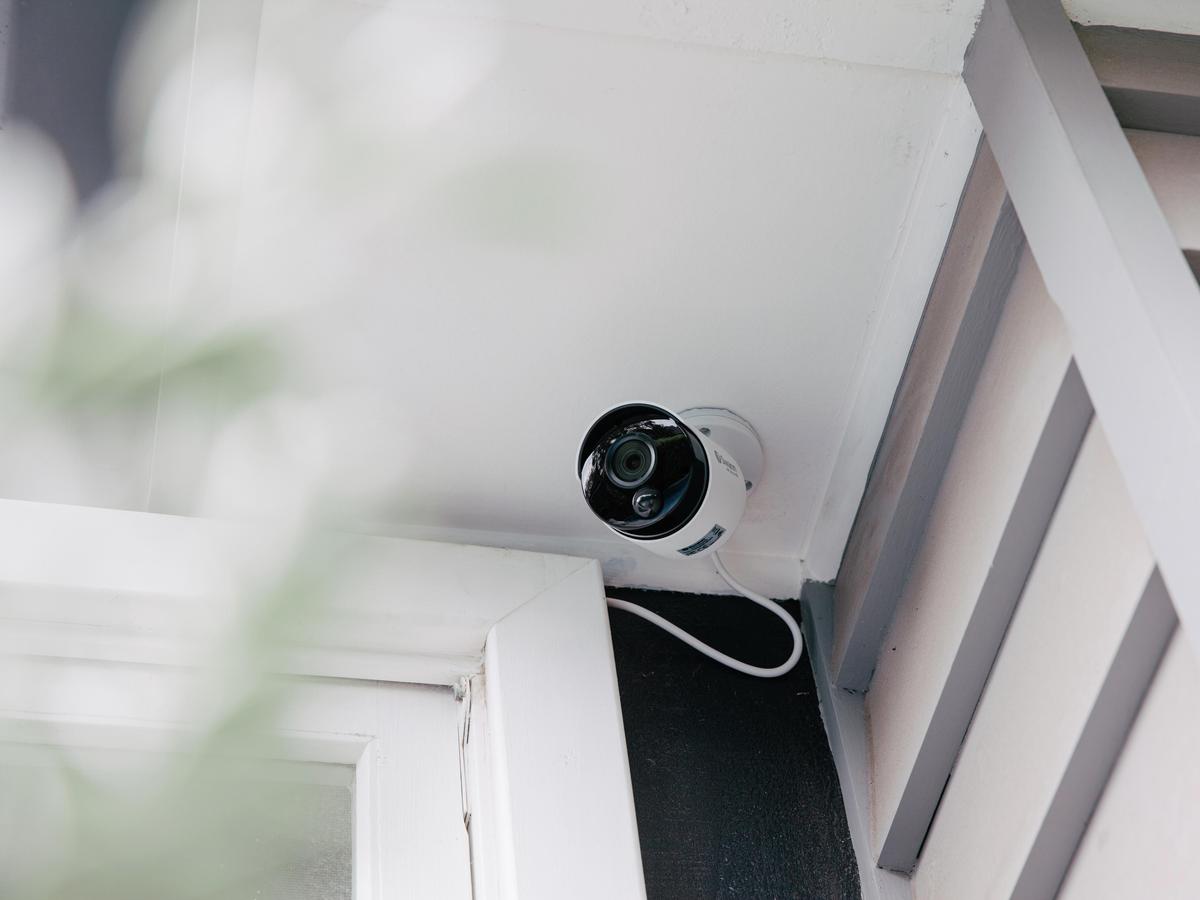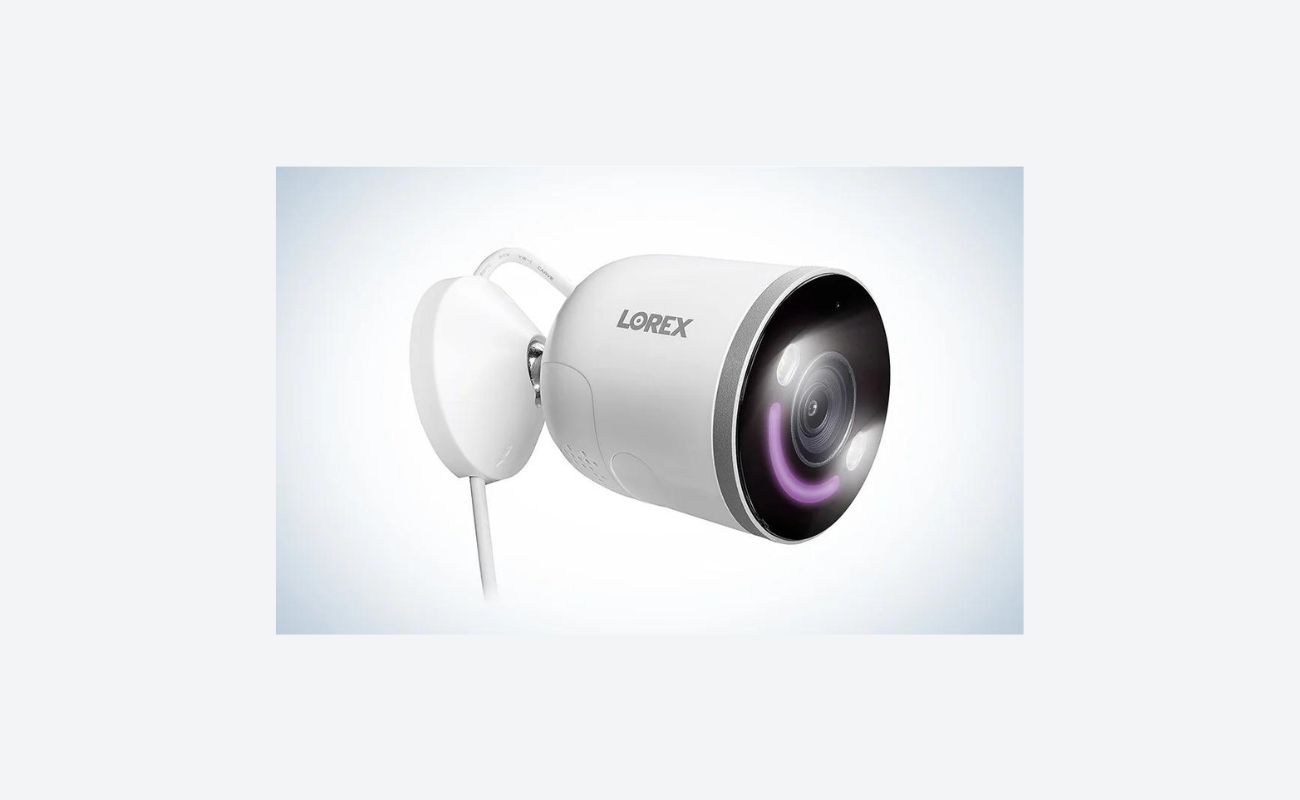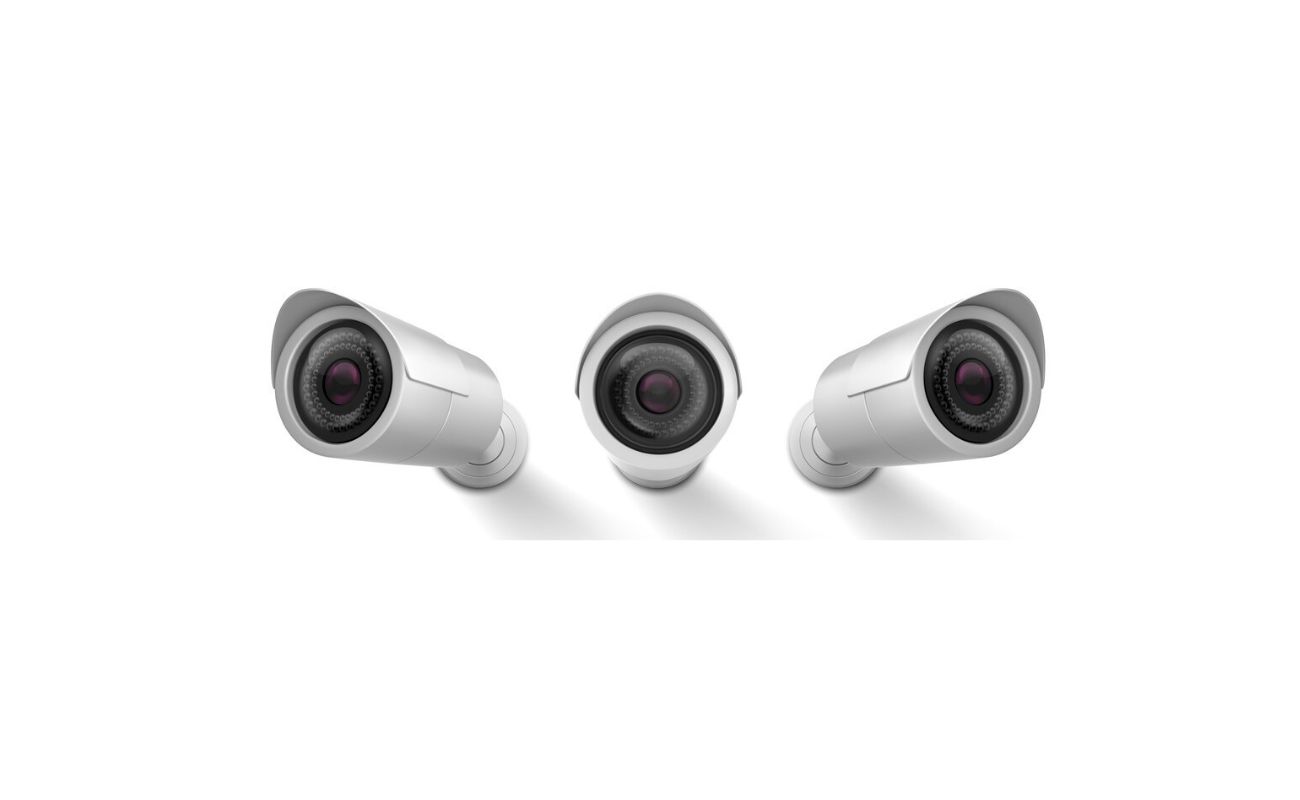Home>Home Security and Surveillance>What Do You Need To Have Wireless Security Cameras
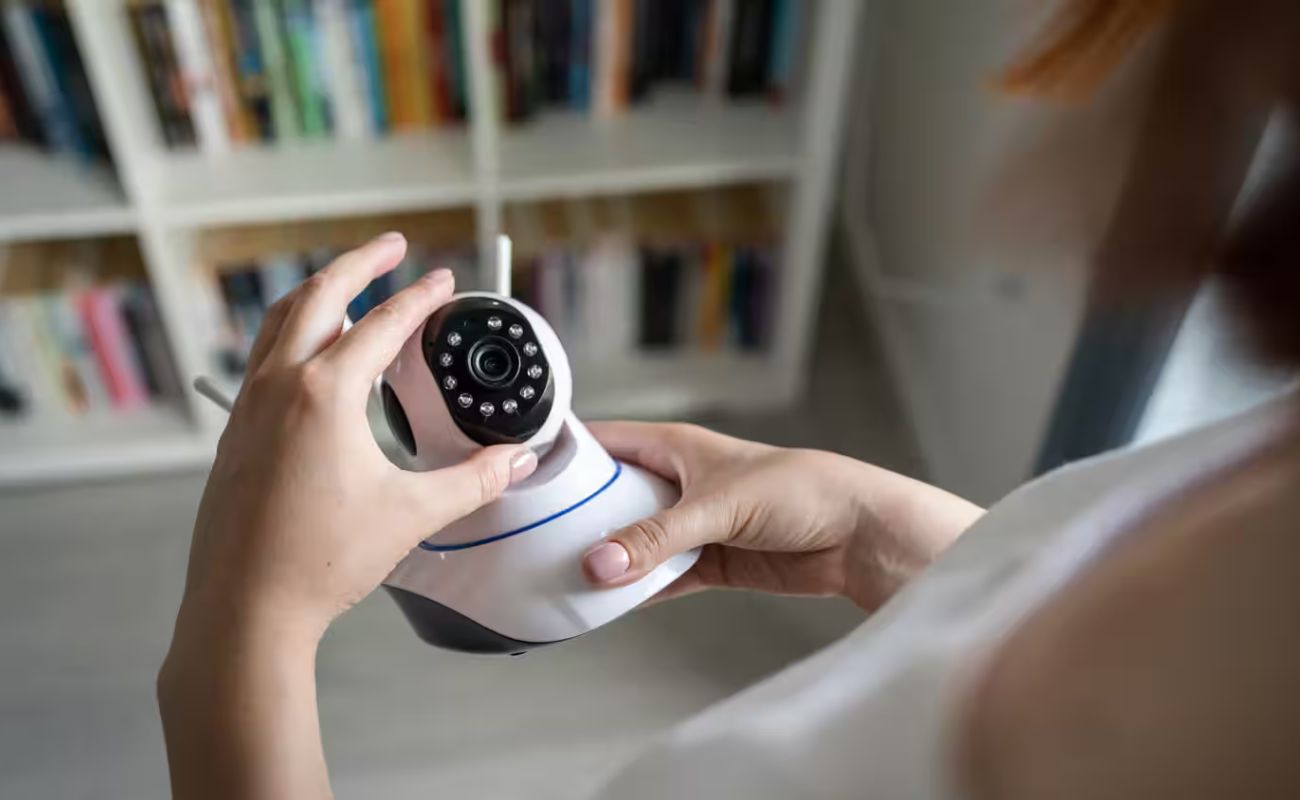

Home Security and Surveillance
What Do You Need To Have Wireless Security Cameras
Modified: October 20, 2024
Looking to enhance your home security and surveillance? Discover the essential features you need for wireless security cameras to keep your property safe and protected
(Many of the links in this article redirect to a specific reviewed product. Your purchase of these products through affiliate links helps to generate commission for Storables.com, at no extra cost. Learn more)
Introduction
When it comes to keeping our homes and loved ones safe, security and surveillance systems play a crucial role. With advancements in technology, wireless security cameras have become increasingly popular for homeowners looking to enhance their home security. These cameras offer a range of benefits and features that make them a great option for monitoring and protecting your property.
In this article, we will explore the world of wireless security cameras, discussing their benefits, factors to consider before purchasing, different types available, essential features to look for, setting up process, and maintenance tips. By the end, you will have a comprehensive understanding of why wireless security cameras are a worthwhile investment.
Key Takeaways:
- Wireless security cameras offer easy installation, remote access, motion detection, and night vision, providing convenience and peace of mind for homeowners.
- Consider camera resolution, field of view, power source, and essential features when choosing wireless security cameras to ensure effective home surveillance.
Read more: Why Do We Need Wireless Security?
Benefits of Wireless Security Cameras
Wireless security cameras provide several advantages over traditional wired cameras. Firstly, as the name suggests, they do not require any complicated wiring. This makes installation quick and hassle-free. You can effortlessly set up the cameras wherever you need them without the limitations of wires and cables.
Moreover, wireless security cameras offer greater flexibility in terms of camera placement. You can position them in any desired location within the range of your Wi-Fi signal. This allows for optimal coverage and surveillance of your property, both indoors and outdoors.
Another advantage of wireless security cameras is their remote access capability. With the help of a compatible smartphone app, you can monitor your cameras from anywhere in the world. Whether you’re at work, on vacation, or running errands, you can keep an eye on your home in real-time and receive alerts in case of any suspicious activity.
Additionally, wireless security cameras often come with advanced features such as motion detection and night vision. These features enable the cameras to detect any movement and record clear footage even in low-light conditions. With motion detection, you can be notified instantly if there is any unexpected activity occurring on your property.
Furthermore, wireless security cameras are often equipped with two-way audio capabilities. This allows you to communicate with whoever is near the camera, whether it’s a visitor at your front door or a family member in another room. This feature enhances your ability to interact and respond to various situations, adding an extra layer of security to your home.
Key Takeaways:
- Wireless security cameras offer easy installation, remote access, motion detection, and night vision, providing convenience and peace of mind for homeowners.
- Consider camera resolution, field of view, power source, and essential features when choosing wireless security cameras to ensure effective home surveillance.
Read more: Why Do We Need Wireless Security?
Benefits of Wireless Security Cameras
Wireless security cameras provide several advantages over traditional wired cameras. Firstly, as the name suggests, they do not require any complicated wiring. This makes installation quick and hassle-free. You can effortlessly set up the cameras wherever you need them without the limitations of wires and cables.
Moreover, wireless security cameras offer greater flexibility in terms of camera placement. You can position them in any desired location within the range of your Wi-Fi signal. This allows for optimal coverage and surveillance of your property, both indoors and outdoors.
Another advantage of wireless security cameras is their remote access capability. With the help of a compatible smartphone app, you can monitor your cameras from anywhere in the world. Whether you’re at work, on vacation, or running errands, you can keep an eye on your home in real-time and receive alerts in case of any suspicious activity.
Additionally, wireless security cameras often come with advanced features such as motion detection and night vision. These features enable the cameras to detect any movement and record clear footage even in low-light conditions. With motion detection, you can be notified instantly if there is any unexpected activity occurring on your property.
Furthermore, wireless security cameras are often equipped with two-way audio capabilities. This allows you to communicate with whoever is near the camera, whether it’s a visitor at your front door or a family member in another room. This feature enhances your ability to interact and respond to various situations, adding an extra layer of security to your home.
One of the key benefits of wireless security cameras is the convenience they offer. Unlike wired cameras that require a dedicated DVR or NVR to store the recorded footage, wireless cameras often have built-in storage options or support cloud storage. This means you can access and review the footage whenever you need to, without the need for any additional equipment.
Another advantage is scalability. If you decide to expand your surveillance system, adding more wireless cameras is a simple and straightforward process. You can easily integrate them into your existing setup without any complex rewiring. This scalability allows you to customize and expand your security system as your needs change over time.
Furthermore, wireless security cameras are less susceptible to tampering or disconnection. Since they do not rely on physical cables, there is no easy way for intruders to disable or sabotage the cameras by cutting wires. This adds an extra level of protection to your home and ensures continuous surveillance.
Lastly, wireless security cameras are often more aesthetically pleasing and discreet than their wired counterparts. They come in various sleek and compact designs, blending seamlessly with your home’s decor. This makes them less noticeable to potential intruders, enhancing their effectiveness as a deterrent.
In summary, wireless security cameras offer numerous benefits, including easy installation, flexible camera placement, remote access capabilities, advanced features, convenience, scalability, tamper resistance, and aesthetic appeal. With these advantages, investing in wireless security cameras is a smart decision to protect your home and loved ones.
Factors to Consider Before Purchasing Wireless Security Cameras
Before making a decision to purchase wireless security cameras for your home, it’s crucial to consider a few key factors. These factors will ensure that you choose the right cameras that meet your security needs and provide optimal performance. Here are some important considerations to keep in mind:
1. Camera Resolution: The resolution of the camera determines the clarity and quality of the footage. Higher resolution cameras offer more detail, making it easier to identify faces, objects, and license plate numbers. Look for cameras with at least 1080p resolution or higher for optimal image quality.
2. Field of View: The field of view (FOV) refers to the area that the camera can capture. A wider FOV allows for better coverage, reducing the number of cameras required. Consider the layout and size of your property to determine the appropriate FOV for effective surveillance.
3. Night Vision: If you want your cameras to provide reliable surveillance even in low-light conditions, look for models with infrared (IR) night vision capability. These cameras use IR LEDs to illuminate the area, capturing clear footage in complete darkness.
4. Motion Detection: Motion detection is a valuable feature that alerts you when there is movement within the camera’s field of view. This helps to minimize false alarms and ensures that you are notified of any suspicious activity in real-time. Look for cameras with customizable motion detection settings.
5. Connectivity and Range: Check the wireless connectivity options of the cameras. Look for cameras that support Wi-Fi connections or have the ability to connect to a network through an Ethernet cable. Additionally, consider the range of the cameras, ensuring that they can maintain a good signal quality within the desired coverage area.
6. Power Source: Determine how the cameras will be powered. Some wireless cameras are battery-powered, offering flexibility in terms of placement. Others may require a constant power source via an AC adapter or PoE (Power over Ethernet) connection. Consider your preferences and the availability of power outlets when choosing the cameras.
7. Storage Options: Consider how the cameras store recorded footage. Some cameras have built-in storage options, while others may support local storage via microSD cards or offer cloud storage options. Evaluate the storage capacity and choose the option that works best for your needs and budget.
8. Mobile App and Integration: Check if the cameras come with a dedicated mobile app for remote access and control. A user-friendly app allows you to monitor and manage your cameras conveniently from your smartphone or tablet. Additionally, consider if the cameras can integrate with other smart home devices or security systems for enhanced functionality.
9. Weather Resistance: If you plan to install outdoor cameras, ensure that they are weatherproof and can withstand various weather conditions. Look for cameras with an IP65 or higher rating to ensure protection against rain, snow, dust, and extreme temperatures.
10. Budget: Finally, consider your budget for purchasing and maintaining the wireless security cameras. Set a realistic budget and compare prices of different models, considering the features and quality they offer. Remember to also account for any additional costs such as storage subscriptions or accessories.
Taking these factors into account will help you make an informed decision and choose wireless security cameras that meet your specific requirements. Remember that each home is unique, so carefully consider your needs and preferences before making a purchase to ensure maximum effectiveness and satisfaction with your security system.
Types of Wireless Security Cameras
There are several types of wireless security cameras available on the market, each designed to cater to different surveillance needs and preferences. Understanding the different types will help you choose the most suitable cameras for your home security system. Here are the main types of wireless security cameras:
1. Indoor Cameras: Indoor cameras are designed to be installed inside your home. They are typically compact and discreet, allowing you to monitor specific areas such as entryways, hallways, or common living spaces. These cameras are ideal for keeping an eye on your home when you’re away or for monitoring activities inside the house.
2. Outdoor Cameras: Outdoor cameras are specially designed to withstand various weather conditions and provide surveillance for the exterior of your home. They are rugged, weatherproof, and often come with features like night vision to monitor your property day and night. Outdoor cameras are crucial for deterring potential intruders and keeping your outdoor spaces secure.
3. Dome Cameras: Dome cameras are named after their shape, with a dome-shaped housing that makes it difficult for intruders to identify the direction the camera is facing. These cameras can be used both indoors and outdoors and are highly versatile. Dome cameras often have wide-angle lenses, providing a broad field of view and comprehensive coverage.
4. Bullet Cameras: Bullet cameras are long and cylindrical in shape, resembling a bullet casing. They are commonly used for outdoor surveillance and are often equipped with infrared LEDs for night vision capabilities. Bullet cameras are visible and act as a deterrent to potential intruders due to their noticeable presence.
5. PTZ Cameras: PTZ (Pan-Tilt-Zoom) cameras offer enhanced flexibility and control. These cameras can be remotely controlled to pan horizontally, tilt vertically, and zoom in or out. PTZ cameras are commonly used in large outdoor areas or commercial properties where a single camera can cover a vast area and provide detailed focus on specific points of interest.
6. Hidden Cameras: Hidden cameras are designed to be discreet and covert, making them ideal for situations where you want to monitor without drawing attention. These cameras can be disguised as everyday objects such as clocks, smoke detectors, or even household appliances, enabling you to monitor without anyone knowing.
7. Wireless Doorbell Cameras: Wireless doorbell cameras combine the functionality of a doorbell with a built-in camera. These cameras allow you to see and communicate with visitors at your front door through a smartphone app. They offer an additional layer of security by providing a clear view of who is at your doorstep before answering.
8. Solar-Powered Cameras: Solar-powered cameras are designed to be energy-efficient and environmentally friendly. They are equipped with a solar panel that charges the camera’s battery using sunlight. These cameras are ideal for remote areas or locations where access to power outlets is limited.
When choosing the type of wireless security cameras for your home, consider factors such as the desired location, specific surveillance needs, budget, and desired features. By selecting the right type of camera, you can build a comprehensive and effective wireless security system that meets your unique requirements.
When setting up wireless security cameras, make sure to use strong, unique passwords for your camera system and Wi-Fi network to prevent unauthorized access. Regularly update the camera’s firmware to protect against security vulnerabilities.
Read more: What Is The Best Wireless Security Camera
Essential Features of Wireless Security Cameras
When it comes to wireless security cameras, there are several essential features that you should consider to ensure optimal performance and functionality. These features not only enhance the overall effectiveness of your security system but also provide convenience and peace of mind. Here are some key features to look for in wireless security cameras:
1. High-Definition Resolution: Opt for cameras with high-definition resolution, such as 1080p or higher. Higher resolution ensures clear and detailed images, enabling you to easily identify faces, objects, or any suspicious activity captured by the camera.
2. Wide-Angle Lens: Look for cameras with a wide-angle lens to provide a broad field of view. A wider angle allows for greater coverage, reducing the number of cameras required and ensuring comprehensive surveillance of your premises.
3. Night Vision: Night vision is a crucial feature, especially for outdoor cameras or areas with limited lighting conditions. Infrared (IR) LEDs enable the camera to capture clear footage in complete darkness, ensuring 24/7 surveillance and providing visibility even in low-light environments.
4. Motion Detection: Motion detection capabilities are essential for wireless security cameras. This feature detects any movement within the camera’s field of view and triggers alerts or recording. Look for cameras with customizable motion detection settings to minimize false alarms and ensure accurate notifications.
5. Two-Way Audio: Two-way audio allows for communication between the camera and the person on the other end. This feature enables you to speak and listen to whoever is near the camera, whether it’s a visitor at your front door or a family member in another room. It enhances security by enabling real-time interaction and response.
6. Smartphone Compatibility: Ensure that the cameras are compatible with your smartphone or mobile device. Look for cameras that have dedicated mobile apps that allow you to monitor, control, and receive alerts from your cameras remotely. This feature provides convenience and flexibility in managing your security system.
7. Cloud Storage: Cloud storage allows you to store and access recorded footage securely over the internet. Some wireless security cameras offer free or subscription-based cloud storage options, eliminating the need for physical storage devices and providing remote access to your video archives.
8. Weatherproof and Durability: If you plan to install cameras outdoors, ensure they are weatherproof and can withstand various weather conditions. Look for cameras with an IP65 or higher rating, indicating protection against dust, rain, snow, and extreme temperatures. A durable build ensures long-lasting performance and reliability.
9. Remote Pan, Tilt, and Zoom: Cameras with remote pan, tilt, and zoom (PTZ) capabilities allow you to control the camera’s movement and focus manually or automatically through the mobile app or software. This feature provides flexibility in monitoring specific areas of interest and capturing details in real-time.
10. Easy Installation and Setup: Choose cameras that offer easy installation and setup. Look for cameras that can be mounted securely without complex wiring or additional equipment. User-friendly setup processes ensure that you can start using your cameras quickly and efficiently.
Keep in mind that the specific features you prioritize will depend on your surveillance needs, property layout, and personal preferences. By considering these essential features, you can select wireless security cameras that provide advanced functionality, convenience, and reliable protection for your home or business.
Setting Up Your Wireless Security Cameras
Setting up wireless security cameras may seem intimidating at first, but with proper planning and execution, it can be a straightforward process. Here are the steps to help you set up your wireless security cameras effectively:
1. Determine Camera Placement: Before installing your cameras, identify the areas you want to monitor. Assess your property and consider key entry points, vulnerable areas, and high-traffic zones. This will guide you in determining the ideal placement for your cameras to achieve optimal surveillance coverage.
2. Check Wi-Fi Signal Strength: Ensure that your wireless cameras will receive a strong and stable Wi-Fi signal in their intended locations. Weak or intermittent signal strength can affect the performance of your cameras. Consider installing Wi-Fi extenders or access points to improve the coverage and signal quality if needed.
3. Power Source: Determine the power source for your wireless cameras. Some cameras are battery-powered, while others require a constant power supply through an AC adapter or Power over Ethernet (PoE) connection. Ensure that the power source is readily available and accessible for each camera installation location.
4. Install Camera Mounts: If your cameras require mounting, install the camera mounts securely. Use appropriate tools and hardware to attach the camera mounts to walls, ceilings, or other surfaces as needed. Ensure that the mounts are stable and provide the desired angle and coverage for each camera.
5. Connect to Power Source: Connect your cameras to the power source. Follow the manufacturer’s instructions to properly connect the power cables or insert batteries into battery-powered cameras. Double-check the connections to ensure a reliable power supply for each camera.
6. Connect to Network: Connect your wireless cameras to your Wi-Fi network. Depending on the camera model, this may involve using a mobile app or software provided by the manufacturer. Follow the instructions to connect each camera to your network, ensuring that you enter the correct Wi-Fi credentials.
7. Install Mobile App or Software: Install the dedicated mobile app or software provided by the camera manufacturer on your smartphone, tablet, or computer. This will allow you to remotely access, view, and control your cameras. Make sure you follow the instructions to set up the app or software correctly.
8. Configure Camera Settings: Use the mobile app or software to configure the settings of your cameras. This includes adjusting preferences such as motion detection sensitivity, video quality, recording schedules, and other features specific to your camera model. Customize the settings according to your security needs and preferences.
9. Test Camera Coverage and Functionality: Once your cameras are installed and connected, perform a thorough test. Check the camera coverage to ensure that the desired areas are properly monitored. Test the functionality of features such as motion detection, night vision, and two-way audio to ensure they are working correctly.
10. Monitor and Review: After setup is complete, regularly monitor and review the footage captured by your wireless security cameras. Use the mobile app or software to access the live feed or recorded footage whenever you need to. Familiarize yourself with the functionality of the app or software for seamless monitoring and control.
Remember to refer to the manufacturer’s instructions and guidelines specific to your camera model throughout the setup process. Properly setting up your wireless security cameras ensures that you maximize their effectiveness in protecting your home or property.
Maintaining and Troubleshooting Wireless Security Cameras
Maintaining and troubleshooting your wireless security cameras is crucial to ensure their optimal performance and longevity. Regular maintenance and timely troubleshooting can help prevent issues and keep your security system running smoothly. Here are some important tips for maintaining and troubleshooting wireless security cameras:
1. Keep Cameras Clean: Regularly clean the lenses of your cameras to remove any dust, dirt, or smudges that may affect the image quality. Use a microfiber cloth or a lens cleaning solution for gentle cleaning. Check the camera housing for any dirt or debris buildup and clean it if necessary.
2. Check Power Connections: Periodically inspect the power connections of your wireless cameras to ensure they are secure and provide a reliable power supply. Loose or faulty power connections can cause cameras to malfunction or stop working altogether. Make sure the power cables or batteries are properly connected.
3. Update Firmware: Regularly check for firmware updates for your wireless cameras. Manufacturers often release firmware updates to improve camera performance, add new features, or fix any known bugs or vulnerabilities. Update the firmware as recommended by the manufacturer to ensure your cameras are up to date.
4. Monitor Battery Life: If you have battery-powered wireless cameras, keep an eye on the battery life and recharge or replace the batteries as needed. Low battery levels can impact camera performance and may lead to camera shutdown. Consider investing in rechargeable batteries to save cost and minimize environmental impact.
5. Adjust Motion Detection Settings: If you experience frequent false alarms or missed recordings, review and adjust the motion detection settings of your cameras. Fine-tune the sensitivity and detection zones to avoid unnecessary alerts or to capture all relevant motion within the camera’s field of view.
6. Check Wi-Fi Signal Strength: Periodically check the Wi-Fi signal strength of your wireless cameras. Weak or unstable Wi-Fi signals can lead to intermittent connectivity issues or poor video streaming quality. Consider relocating the cameras or installing Wi-Fi extenders to strengthen the signal in areas with poor coverage.
7. Review Storage Capacity: Regularly review the storage capacity of your cameras, especially if you use local storage options like microSD cards. Ensure that the storage devices have sufficient space to store the recorded footage. Regularly back up important footage and delete unnecessary recordings to free up storage space.
8. Test Remote Access: Periodically test the remote access functionality of your wireless security cameras. Use the mobile app or software to remotely view the camera feed and playback recorded footage. Ensure that you can access the cameras securely from outside your home network and troubleshoot any access issues promptly.
9. Consult Manufacturer’s Support: If you encounter persistent issues or technical difficulties with your wireless cameras, consult the manufacturer’s support resources. Check the manufacturer’s website for troubleshooting guides, FAQs, or contact their support team directly for assistance. They can provide specific troubleshooting steps or help diagnose and resolve any camera-related issues.
10. Regularly Test and Evaluate: Conduct regular testing and evaluation of your wireless security cameras to ensure they are functioning optimally. Test features such as live streaming, motion detection, night vision, and two-way audio to ensure they are working as intended. Regularly review recorded footage to identify any potential issues or areas that require improvement.
By following these maintenance and troubleshooting tips, you can keep your wireless security cameras in excellent condition and address any technical issues promptly. Maintained cameras will provide reliable and effective surveillance, offering you peace of mind and enhanced home security.
Conclusion
Wireless security cameras have revolutionized the way we monitor and protect our homes. The benefits and features they offer make them a valuable addition to any home security system. With easy installation, flexible placement options, and remote access capabilities, wireless security cameras provide convenience, peace of mind, and enhanced protection.
In this article, we explored the benefits of wireless security cameras, including their wireless connectivity, remote access, motion detection, night vision, and two-way audio capabilities. We also discussed factors to consider before purchasing wireless security cameras, such as camera resolution, field of view, and power source.
Different types of wireless security cameras were also discussed, including indoor, outdoor, dome, bullet, PTZ, hidden, wireless doorbell, and solar-powered cameras. Each type serves specific surveillance needs and preferences, ensuring that you can choose the most suitable cameras for your home.
Essential features to look for in wireless security cameras were emphasized, such as high-definition resolution, night vision, motion detection, two-way audio, smartphone compatibility, cloud storage, and durability. These features enhance the overall performance and functionality of the cameras, providing you with efficient and reliable home security.
Furthermore, we covered the steps for setting up wireless security cameras, including determining camera placement, checking Wi-Fi signal strength, installing camera mounts, connecting to a power source and network, and configuring camera settings. Proper setup ensures optimal camera coverage and functionality.
Maintaining and troubleshooting wireless security cameras were also discussed, highlighting the importance of cleaning the cameras, checking power connections, updating firmware, monitoring battery life, adjusting motion detection settings, and testing remote access. Regular maintenance and timely troubleshooting are crucial to keeping your cameras in top condition.
In conclusion, wireless security cameras offer a range of benefits and features that make them a valuable investment for home security and surveillance. By carefully considering your needs, choosing the right cameras, and following proper setup and maintenance procedures, you can achieve a comprehensive and effective security system that provides peace of mind and protection for you and your loved ones.
Remember, the safety and security of your home is of utmost importance, and wireless security cameras can play a vital role in ensuring that your property is monitored and protected. Invest in wireless security cameras today to enhance your home security and gain greater peace of mind.
Frequently Asked Questions about What Do You Need To Have Wireless Security Cameras
Was this page helpful?
At Storables.com, we guarantee accurate and reliable information. Our content, validated by Expert Board Contributors, is crafted following stringent Editorial Policies. We're committed to providing you with well-researched, expert-backed insights for all your informational needs.
